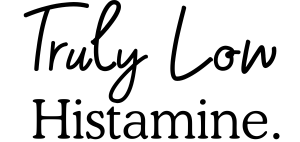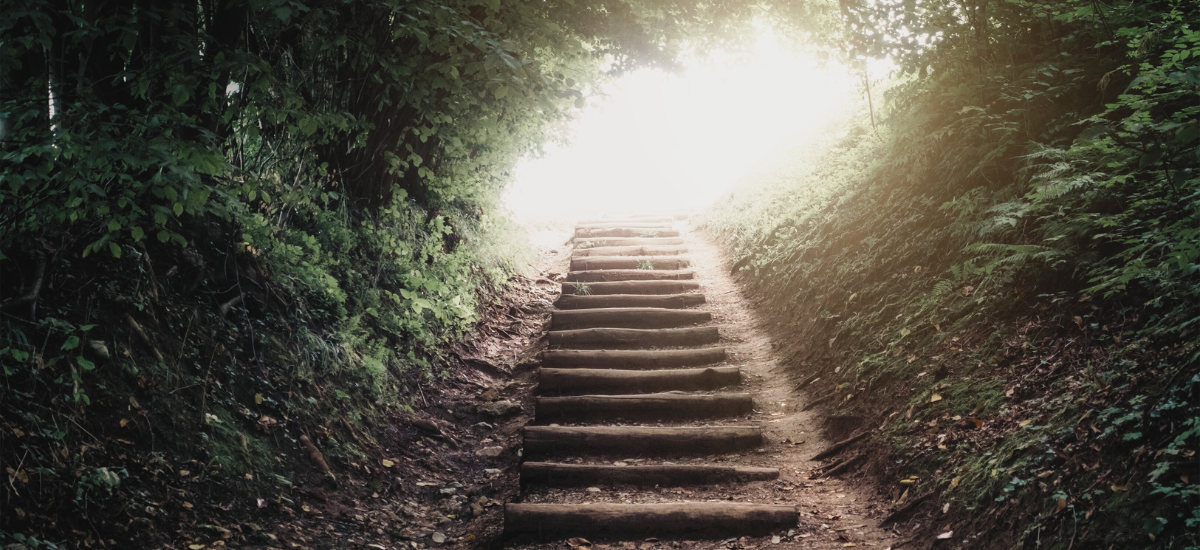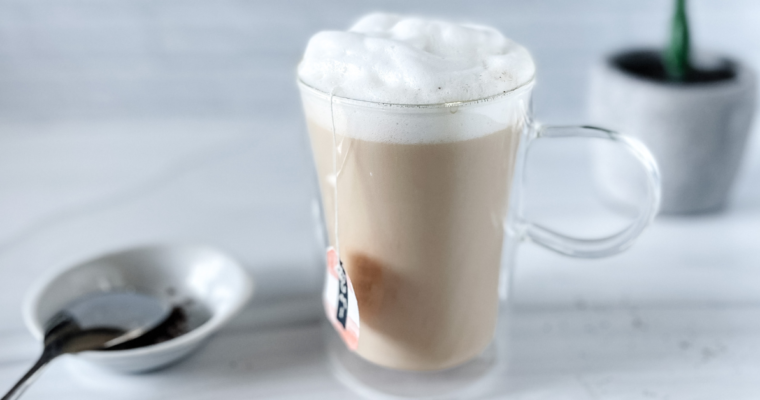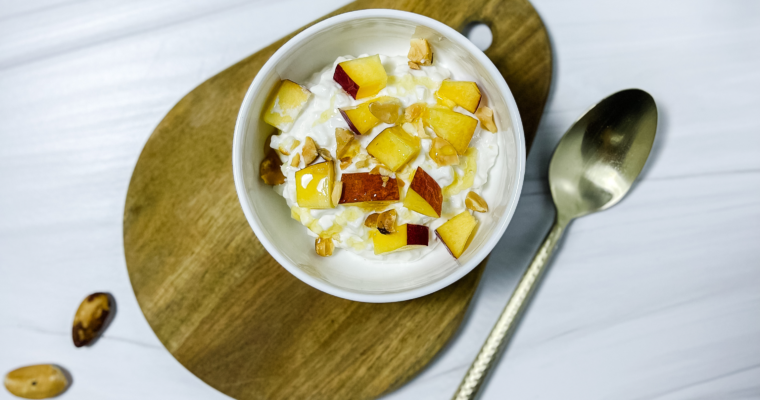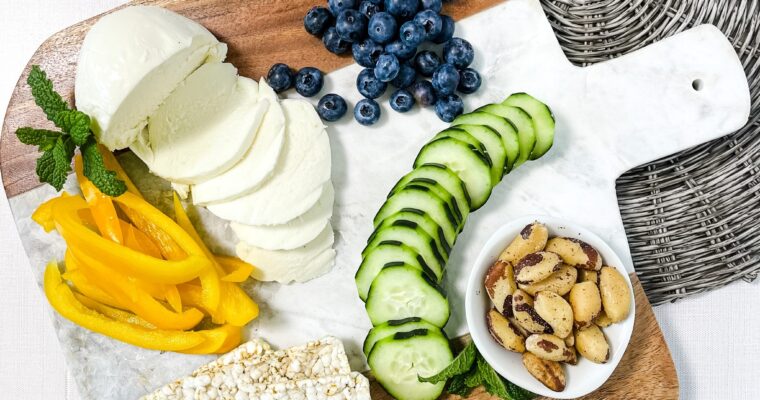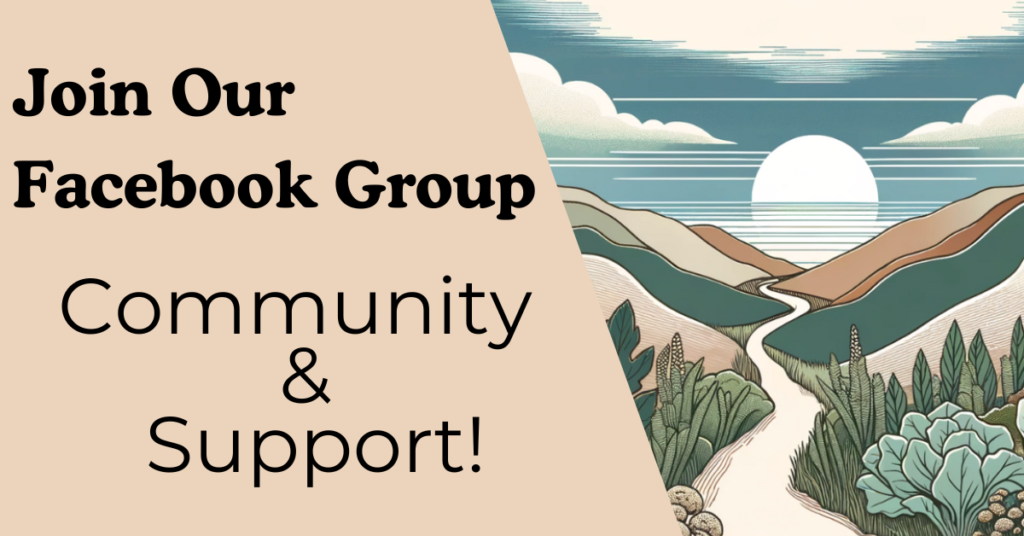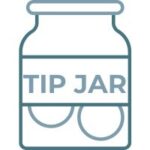After years of enduring debilitating symptoms, dealing with misdiagnoses, conducting countless hours of research, and experimenting with an array of natural solutions, I finally feel like I have my life back. A significant part of that is due to adopting a low histamine diet. I’m excited to share my journey with you, including the resources and tools I’ve gathered along the way.
My goal is to offer support to anyone dealing with the challenges that histamine intolerance and a low histamine diet present.
So much so that I’ve created a whole ass blog, dedicated to assisting individuals treading the same path I once did. My hope is that by sharing my experiences, I can help you overcome obstacles more swiftly on your path to better health.
- WHAT IS HISTAMINE INTOLERANCE
- SYMPTOMS OF HISTAMINE INTOLERANCE
- WHAT IS A LOW HISTAMINE DIET
- LOW HISTAMINE DIET FOOD LIST
- HELPFUL LOW HISTAMINE DIET RESOURCES
- TOOLS FOR MANAGING A LOW HISTAMINE DIET
- TIPS FOR NAVIGATING A LOW HISTAMINE DIET
- ENHANCING YOUR DIET: SUPPLEMENTS AND LIFESTYLE CHANGES
- LOW HISTAMINE DIET FAQ
- SOURCES
Just a quick note: I’m not a doctor, I don’t even play one on TV, but I am excited to share my personal low histamine diet journey with you because it has been life-changing for me. Remember, what works for me may not be a perfect fit for you. This blog is meant to share what I discovered through research and working with my doctors and hopefully offer some helpful insights based on my experiences. Before making any big changes, it’s always a good idea to chat with your healthcare provider.
WHAT IS HISTAMINE INTOLERANCE
If you are here, most likely you already know you have histamine intolerance and know what it is. But this is for the newbies and loved ones of people with histamine intolerance so you can be a little more in the know.
Histamine intolerance is a condition where the body has difficulty breaking down histamine, a naturally occurring chemical involved in various bodily functions.
When histamine accumulates in excess due to inefficient processing, it can lead to a wide range of symptoms such as headaches, hives, digestive problems, and more. This intolerance is often attributed to a deficiency in the enzyme diamine oxidase (DAO), responsible for breaking down histamine.
To manage histamine intolerance, individuals typically follow a low histamine diet, which involves avoiding high-histamine foods and histamine-liberating substances to minimize symptom occurrence and improve overall well-being.
Consulting a healthcare provider is essential for proper diagnosis and management.
SYMPTOMS OF HISTAMINE INTOLERANCE
The symptoms of Histamine intolerance are so varied. It honestly seems like the list of “what is not a symptom” would be shorter. On top of that, different sources list different symptoms. GAH!
The list below includes symptoms from multiple reliable sources, beautifully displayed in alphabetical order. I have provided links to sources in the SOURCES section below.
- Abdominal Cramps
- Abnormal Menstrual Cycle
- Acid Reflux
- Anxiety
- Bloating
- Breathing Problems
- Conjunctivitis
- Constipation
- Diarrhea
- Difficulty Falling Asleep
- Difficulty Focusing
- Difficulties Regulating Body Temp
- Digestive Issues
- Dizziness and/or Vertigo
- Fatigue
- Flatulence
- Flushing
- Headache
- High Blood Pressure
- Irregular or Fast Heart Rate
- Itchy Skin
- Low Blood Pressure
- Memory Lapse
- Migraines
- Mood Disorders
- Nasal Congestion, Sneezing, Difficulty Breathing
- Nausea and/or Vomiting
- Painful Periods
- Palpitations
- Rash or Hives
- Shortness of Breath
- Sinus Problems
- Swelling of Lips, Tongue, or Throat
- Tissue Swelling/Inflammation
- HONERABLE MENTION: Vestibular Migraines Triggered by Histamine – This is not a symptom of Histamine Intolerance but Vestibular Migraines can be triggered by Histamine and are worth mentioning.
For a deeper dive into Vestibular Migraines triggered by Histamine check out my blog post here where I dive deeper into what vestibular migraines are, how I manage Vestibular Migraines, and how a low histamine diet is one of the key ways I do that.
WHAT IS A LOW HISTAMINE DIET
A low histamine diet is an eating plan that restricts foods high in histamine, a naturally occurring chemical compound. It is often followed by people with histamine intolerance, a condition where the body has difficulty processing histamine, leading to various symptoms. The symptoms vary greatly from Migraines, dizziness, and brain fog (my big 3) to Congestion, hives, and digestive issues and so much in between.
A low histamine diet aims to reduce histamine intake by avoiding high-histamine foods, histamine-liberating foods, and DAO-blocking foods. It typically includes fresh foods while excluding aged, fermented, and certain processed foods.
The goal is to alleviate symptoms you are experiencing from histamine intolerance, by minimizing histamine consumption and I am here to tell you it works and it is life-changing.
HISTAMINE BUCKET
I wanted to introduce to you this idea of a Histamine Bucket because the visual of it has helped me so much in understanding why sometimes one food item can mess me up for days, while other times it seems to have no effect. The concept of a “histamine bucket” is a metaphor for how histamine intolerance works.
Imagine your body has a bucket that can only hold a certain amount of histamine at a time. When you consume foods or drinks that contain histamine or trigger its release, it adds to the histamine in your bucket. If your bucket overflows because of too much histamine, you may experience symptoms like headaches, hives, or digestive issues.
On days when you consume fewer histamine-rich foods or engage in practices that reduce histamine release (e.g., stress management, supplements), it’s like emptying your histamine bucket. The goal is to keep histamine levels within your tolerance limit to prevent symptoms.
When you go months, weeks, or even days eating low histamine foods your bucket will be very low. You then can start to test foods that previously triggered your symptoms but now you are able to tolerate them and add them back into your diet. More on how to go about that later in the blog post.
LOW HISTAMINE DIET FOOD LIST
For me, it has been best to think about foods as compatible, incompatible, or may be compatible when eating a low histamine diet.
Incompatible Foods
Foods that are high in Histamine, histamine liberators or DAO blockers are what I like to call the “NO” foods. These foods are very poorly tolerated and tend to cause significant symptoms. I have pretty much accepted that, except for once in a blue moon, I will not be able to eat these again. You can access the NO FOODS list here.
Compatible Foods
These are foods that are well tolerated by people on a low histamine diet. They are foods that are low in histamine AND are not histamine liberators or DAO Blockers. I call these the “YES” foods and you can access them here
May Be Compatible Foods
You are now entering the “Gray Zone” of foods—these are foods that are moderately compatible causing little to no symptoms and often can be enjoyed in small quantities. I call these the MAYBE FOODS, you access the list here.
It is not uncommon for these foods to affect some people with Histamine Intolerance while not affecting others at all. There is no consensus among the Histamine Intolerance community if they are compatible or not. These are the foods you will need to test for yourself. Check out my Low Histamine Foods list post to see how to test for the MAYBE foods.
How Long For a Low Histamine Diet to Work
It is suggested you give the low histamine diet 4-6 weeks before you expect to be free of symptoms
However, I wanted to share with you my experience. In the beginning, when I was doing really poorly and my symptoms were so debilitating, it took:
- 2 weeks to even notice an effect
- 4 weeks to feel hopeful improvement
- 12 weeks until I felt really good
Now that I have been doing the diet for years, if I get off track (which I do. It’s not easy eating this restrictive especially when so much of what I love is now off limits) it takes far less time to get back on track. It now takes:
- 3-5 days to notice an effect
- 1 week to feel a hopeful improvement
- 2 weeks until I feel really good
HELPFUL LOW HISTAMINE DIET RESOURCES
These are the resources I have used in my Low Histamine Diet journey and have found incredibly helpful.
The Dizzy and Vertigo Institute of Los Angeles
Finding Dr. Pearce and The Dizzy and Vertigo Institute of Los Angeles was a tipping point for me to get my life back. When I scheduled my first consultation with Dr. Pearce, I was still grappling for answers. I had stumbled upon various pieces of the puzzle, but I could not figure out how to put it together and what pieces were missing. I needed someone who BELIEVED me when I explained my symptoms, BELIEVED me when I shared what seemed to help, and who knew EXACTLY what I was dealing with and knew how to help.
Dr. Pearce and the Dizzy and Vertigo Institute of Los Angeles diagnosed me, put together a therapy program that worked, and taught me how to navigate life with vestibular migraines and Histamine Intolerance. From that I found one of the best tools to manage my vestibular migraines, eating a low histamine diet.
For more information about my journey with vestibular migraines: my symptoms and what works to help manage them, check out this blog post dedicated to all things Vestibular Migraines.
Books
Here are the books that have been the most helpful in managing a Low Histamine Diet.
- Histamine Intolerance Food List by The Histamine Heros
- Histamine Intolerance Explained by Ketoko Guides
- Histamine Intolerance Cook Book by Ketoko Guides
Podcasts
These are the podcasts that I have found most helpful in navigating and understanding Histamine Intolerance and a Low Histamine Diet.
- Is Histamine Intolerance The Cause Of Your Mysterious Symptoms? – The Doctors Farmacy with Mark Hyman M.D. – 02/01/2021
- Histamine Part 1 – Health Babes Podcast – March 24, 2021
- Histamine Part 2 – Health Babes Podcast – April 5, 2021
- Getting to the Root of Histamine Intolerance & MCAS – Health Babes Podcast – July 4, 2022
Informational Websites
These are the sites I found that provide great information on Histamine Intolerance and Low Histamine Diet.
- Swiss Interest Group Histamine Intolerance (SIGHI)
- Histamine Intolerance Awareness
- Amy Meyers MD
- Histamine Haven
- The Histamine Intolerance Site
- Fact vs Fitness
- Mast Cell 360
- Dr. Becky Campbell – Functional Medicine
Social Media
- Bobby Parish – I love this guy. For me and many others, he has become a go-to source for people seeking cleaner, more wholesome food options. He takes you along to grocery stores where he reviews food labels and lets you know which products are “Bobby Approved” – products that meet his standards for clean and nutritious eating. While not all of these items he reviews may compatible with a low histamine diet, his content helps you make more informed decisions when it comes to your food choices, making it a useful resource for those looking to adopt a low histamine diet. You can find him on YouTube, Instagram, Facebook, TikTok, and online at flavcity.com.
Online Stores
Finding packaged foods that work in the low histamine diet plan is not easy. So many packaged foods have added ingredients that are a NO for people on a low histamine diet, making it so hard to food shop. Sometimes getting certain foods at your local stores is just not an option. These Online stores offer good, additive-free options.
- Thrive Marketplace
- Amazon/Whole Foods
TOOLS FOR MANAGING A LOW HISTAMINE DIET
These are tools that I created to help me manage a low histamine diet and I know they will help you too.
YES NO MAYBE Food Lists
Navigating a low histamine diet can be a daunting task, as knowing what’s safe to eat can be overwhelming. To simplify this process, I’ve created these YES, NO, and MAYBE Low Histamine Diet Foods lists.
Click here to access the food list and print a PDF copy.
Food Journal
Keeping a food journal is vital for anyone navigating a low-histamine diet. It’s like having a personal roadmap to your dietary well-being. By logging what you eat and drink, your symptoms, and the supplements you take, you can uncover hidden triggers and understand how different factors affect your symptoms. This diligent tracking enables you to customize your diet to your unique needs, making it more than just a record of meals—it becomes a tool for empowerment, helping you make informed choices that lead to better health and a deeper understanding of your body’s reactions.
Click here to access our comprehensive Food Journal – available for both printing and downloading.
Quick start guide

Access this Quick Start Guide to get you going on a low histamine diet quickly and with the tools you need to be successful. The Guide is packed with practical diet tips, comprehensive ‘Yes’, ‘No’, and ‘Maybe’ food lists, a food journal, and an informative FAQ section – all designed to set you on a successful path to managing histamine intolerance.
TIPS FOR NAVIGATING A LOW HISTAMINE DIET
Grocery Shopping
READ EVERY LABEL! I don’t mean to yell but I can’t stress this enough. You will be surprised what kind of crap is hidden in your food. You might think you are doing great but wonder why you are getting worse only to realize there is locust bean gum in your coconut milk *gasp*.
Eating out at restaurants or friends/family house
Eating out is hard, I am not going to sugarcoat it. But with some planning ahead you can still enjoy a dinner out with friends and family. Here are some tips to help you do just that.
- Choose Foods that are unseasoned or seasoned using butter and seasoning from the YES list
- Steak
- Chicken
- Grilled Artichoke
- Baked Potato
- Rice
- Salad (w/ veggies from the YES list) – no dressing but can add fresh mozzarella
- Rice Pasta
- Quinoa cooked in water
- Veggies sauteed in butter (veggies from the YES list)
- Oatmeal with Blueberries and honey
- Carry your salad dressing in a flask – Whether it’s dinner at a restaurant or a friend’s house, salad is usually a safe bet or easily made so, except for the dressing. So bring your Salad dressing in a flask with you. Problem solved! And you will look kind of mysterious using it.
- Create a list of restaurants that work for you so when someone asks you to dinner you can offer a few suggestions
ENHANCING YOUR DIET: SUPPLEMENTS AND LIFESTYLE CHANGES
The food you put in your mouth is one part of adopting a low histamine diet, but there are a few other things you can do to level up your low histamine diet – supplements and lifestyle changes. Here’s your guide to supplementing your diet and adjusting your lifestyle for optimal health and well-being.
Supplements: Your Allies in Balance
When I incorporated supplements into my Low Histamine Diet plan I noticed a marked improvement. They are now part of my daily morning and evening routine.
Before you start any of these supplements it’s always important to check with your health care provider to make sure you are taking the right supplements at the level you need and there are no interactions with any current medication you may be taking. I certainly did.
- Diamine Oxidase (DAO) Supplements: DAO is the enzyme that breaks down histamine in your gut. If you’re running low, which is often the case with histamine intolerance, consider a high-quality DAO supplement. Suggested Brand: Ancestral Supplements Grass Fed Beef Kidney DAO Enzyme supplement.
- Vitamin C – The Histamine Bouncer: Think of Vitamin C as the bouncer at the club of your body, showing histamine the exit door. This powerful antioxidant helps stabilize mast cells, which are notorious for releasing histamine. You’ll find it in broccoli and bell peppers but a supplement can give you that extra boost.
- Quercetin – Nature’s Antihistamine: Quercetin is a natural flavonoid found in apples, onions, and berries. It works by stabilizing mast cells (just like Vitamin C) and can be a great addition to your supplement regimen. Taken with Vitamin C it helps absorption levels.
- Vitamin B6 – The Metabolic Maestro: Vitamin B6 is crucial for histamine regulation. It aids in the breakdown of histamine by acting as a coenzyme, ensuring balanced histamine levels in the body. Adequate Vitamin B6 is essential to prevent excessive histamine release and to support various metabolic processes. It’s like the conductor of an orchestra, ensuring everything runs smoothly. Foods like poultry and dairy are great sources, but if your diet falls short, a supplement can be beneficial.
- Probiotics – The Gut Guardians: A healthy gut is your first line of defense against histamine overload. Probiotics help maintain a balanced gut flora, crucial for breaking down histamine efficiently. Many probiotic strains can increase histamine levels in the body, potentially causing negative reactions in individuals with histamine intolerance. Therefore, it’s important to select probiotics that are specifically known for their ability to reduce histamine. Opt for histamine-friendly probiotics formulated without strains that are notorious for high histamine production. Suggested Brand: ProBiota HistaminX by Seeking Health.
Lifestyle Tweaks: More Than Just Diet
In addition to food and supplements, there are some lifestyle changes you can make that will help in the reduction of histamine in your diet. Thats what the low histamine diet is all about.
WATER WATER WATER
I can not stress this enough. Staying well-hydrated is vital for managing histamine intolerance. Drinking enough water helps flush out excess histamine, reducing the likelihood of symptom triggers. Additionally, dehydration can lead to histamine release, causing issues like headaches.
This is a big issue for me. I find I need to FULLY HYDRATED, more than the recommended amount. Without adequate hydration, I can count on a headache. Even when I eat, low histamine if I am not well hydrated. I WILL HAVE SYMPTOMS. T
Stress Management
Stress can be a significant trigger for histamine release. Techniques like mindfulness, yoga, or even simple breathing exercises can help keep stress at bay.
Sleep Hygiene
Never underestimate the power of a good night’s sleep. Sleep disturbances can exacerbate histamine issues, so aim for 7-9 hours of quality sleep each night.
Exercise
Regular exercise can improve your overall health, but beware – too much high-intensity exercise can trigger histamine release. Find a balance with moderate activities like walking, swimming, or gentle yoga.
Mindful Eating
Pay attention to how foods affect you. Keeping a food journal can help you identify triggers and tailor your diet to your body’s needs. Curious about starting your own food journal journey? Don’t miss out on our blog post, ‘THE ESSENTIAL LOW-HISTAMINE FOOD JOURNAL: UNLOCK YOUR DIET’S SECRETS‘. Dive in to discover why a food journal is a must-have tool in your low-histamine lifestyle and how you can get started today.
Remember, while supplements and lifestyle changes are vital, they’re part of a larger puzzle. Consult with a healthcare professional to tailor these suggestions to your specific needs.
LOW HISTAMINE DIET FAQ
What is a low histamine diet?
A low histamine diet is an eating plan that restricts foods high in histamine, a naturally occurring chemical compound. The diet aims to reduce histamine intake by avoiding high-histamine foods, histamine-liberating foods, and DAO-blocking foods. It typically includes fresh foods while excluding aged, fermented, and certain processed foods.
Why eat a Low Histamine diet?
A low histamine diet is a great tool for people with histamine intolerance or histamine sensitivity. Check out the symptoms listed above and if you think you might have a histamine intolerance talk to a doctor (one who understands histamine intolerance) about eating a low histamine diet.
Does a Low Histamine Diet work?
Absolutely! I am proof that it 100% does. If you have histamine intolerance and you stick to the diet you will notice an improvement in how you feel.
How long does it take a Low Histamine Diet to work?
It is suggested to give it 4-6 weeks. However, for me in the beginning, it took 4 weeks to notice a change and 12 weeks to be nearly symptom-free.
Can a low histamine diet help you lose weight?
The low histamine diet is not specifically designed for weight loss but rather designed to lower histamine levels in the body. However, a by-product of following a low histamine diet MAY result in weight loss, as it did for me. For me, the switch from eating less processed food, aged cheese, cured meats, and bread to eating more fruits, veggies, and whole foods was a far healthier diet and hence I lost weight and my health improved.
What can you eat on a low histamine diet?
Knowing what you can and can’t eat on a low histamine diet can be daunting and overwhelming. Check out my blog post here where I break it down and give you YES, NO, and MAYBE food lists to make the decision on what to eat easier.
How do I start a low histamine diet?
Starting a low histamine diet can be so confusing because for many it is such a big change in what and how you eat. I put together a Low Histamine Diet Quick Start Guide so you can start today.
SOURCES
SIGHI Dietary Change: Swiss Interest Group Histamine Intolerance (SIGHI)
Does Histamine Intolerance Cause Allergies, Headaches & Bloating?: Dr. Josh Axe, DC, DNM, CN. Dr. Axe. Published March 20, 2018
Histamine Intolerance: Cleveland Clinic. Last reviewed by a Cleveland Clinic medical professional on 12/01/2023
Histamine Intolerance: The Current State of the Art: Oriol Comas-Basté, Sònia Sánchez-Pérez, Maria Teresa Veciana-Nogués, Mariluz Latorre-Moratalla, and María del Carmen Vidal-Carou. National Library of Medicine. Published August 14th 2020
Histamine Intolerance: All You Need to Know: Amy Meyers, MD. Amy Meyers MD.
Histamine’s Surprising Connection to Brain Fog and Cognitive Issues: Very Big Brain. Published November 19, 2023
Top 9 Tips for Dealing with a Histamine Reaction: Fact vs Fitness
The Relationship Between Histamine Intolerance and Food: KanodiaMD. Published May 6, 2021
How Quercetin & Vitamin C Are GREAT Antihistamines!: Dr. Susan E. Brown. Published August 12, 2019
7 Natural Ways to Clear Histamine From the Body: Dr. Becky Campbell. Dr Becky Campbell Functional Medicine
